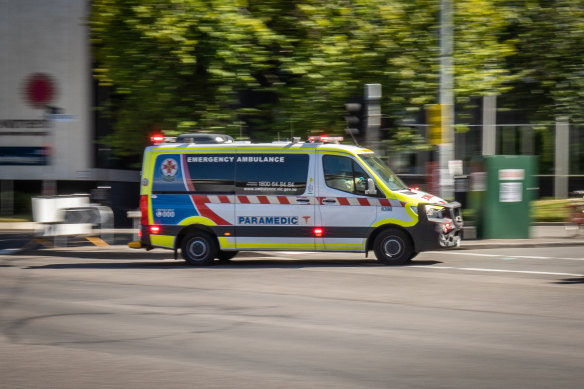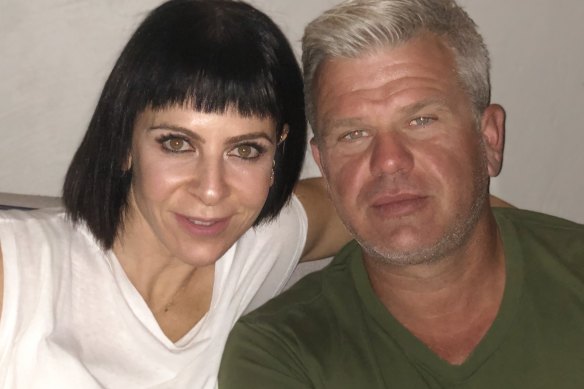- Exclusive
- National
- Victoria
- Emergency services
This was published 2 years ago
More deaths linked to triple-zero crisis as long delays continue
By Aisha Dow
Three more people have died in recent months following triple-zero delays, as long waiting times continue to plague Victoria’s emergency call-taking service.
The Age has obtained a leaked list of “sentinel events” detailing 15 deaths in which those calling for help faced notable delays reaching an ambulance operator at the Emergency Services Telecommunications Authority (ESTA).

Victorians have experienced delays while waiting for ambulances after making triple-zero calls.Credit: Scott McNaughton
The deaths include a 42-year-old woman who was on a video call with a relative in January when she had a seizure at home.
According to a formal report, it took more than four minutes for the triple-zero call to connect to an ambulance operator and the woman died several days later in hospital.
In early March, an 84-year-old man who had been found unconscious by his partner in the middle of the night was pronounced dead on the scene by paramedics after a delay in reaching a call taker of two minutes and 46 seconds.
An investigation by The Age and 60 Minutes previously revealed that 12 people, including four children, had died after those trying to save them from serious injuries or illness made urgent calls to the state’s triple-zero service that were never answered or were picked up too late.

Nick Panagiotopoulos died while waiting for an ambulance in October. His death is the earliest linked to ESTA call answering delays. He is pictured with his wife, Belinda.
While it appears ESTA call response times have improved since January – when, over two weeks, more than 11,500 calls for an ambulance faced waits of more than a minute – significant delays have persisted.
Another leaked document seen by The Age shows that from late March to late April, more than 6000 ambulance calls faced waits of at least one minute, including almost 1000 that waited four minutes or more.
Ninety per cent of ambulance triple-zero calls are meant to be answered within five seconds.
The triple-zero service is expected to be one of the beneficiaries of Tuesday’s state budget, as Premier Daniel Andrews pledges to tackle a health system under severe strain.
A $115.6 million package for 120 new call takers and other staff was announced in March, while money for another 43 staff was allocated in last year’s budget.
The government wouldn’t say how many deaths or adverse events with possible links to call delays it was aware of, citing coronial investigations into four deaths and an ongoing review by ESTA’s regulator, the Inspector-General for Emergency Management.
“ESTA staff have been working tirelessly during the pandemic to help Victorians but, clearly, any delays are unacceptable,” a Victorian government spokeswoman said.
A separate report by former police chief Graham Ashton has been provided to the government, which is considering its recommendations.
While it remains unclear if those who died after waits to reach triple zero would have lived if not for the delays, the deaths highlight the ongoing risk.
Another case in late February in which a patient in a private hospital had self-harmed and later died is on the list of adverse events linked to emergency call answering delays.
Victorian Ambulance Union secretary Danny Hill said delays not only put people at risk by delaying the dispatch of paramedics, they also meant bystanders and family were missing out on potentially life-saving CPR and first aid advice.
“Those instructions to family members and bystanders over the phone, to roll someone onto their side, to check their airways – those are the things that save lives,” he said.
“In a perfect world, that’s delivered within 30 seconds of the call being made. They get the address, the details, they dispatch an ambulance, and then they’re talking them through how to save someone’s life. Even that part of it is being significantly delayed.”
ESTA said it had increased the number of ambulance call takers and dispatch workers by 46 full-time employees since the start of the pandemic and was training more staff every day.
“Significant investments have been made by government for additional call takers and dispatchers and this has increased ESTA’s ability to have a more consistent and stable number of staff rostered on each day to meet higher call demands,” a spokeswoman said.
Cut through the noise of the federal election campaign with news, views and expert analysis from Jacqueline Maley. Sign up to our Australia Votes 2022 newsletter here.